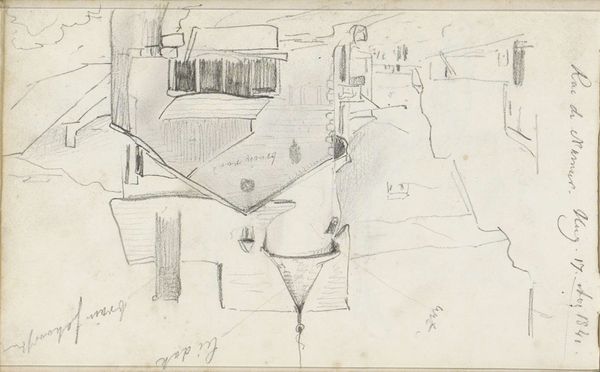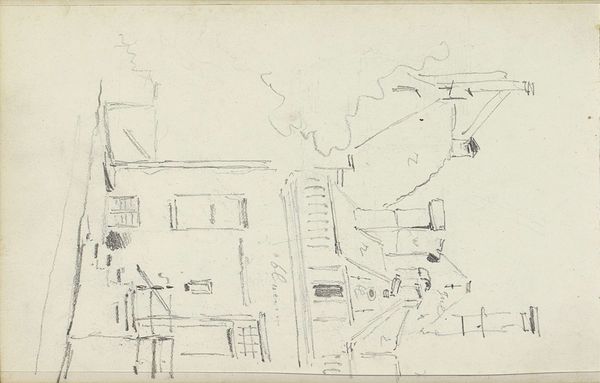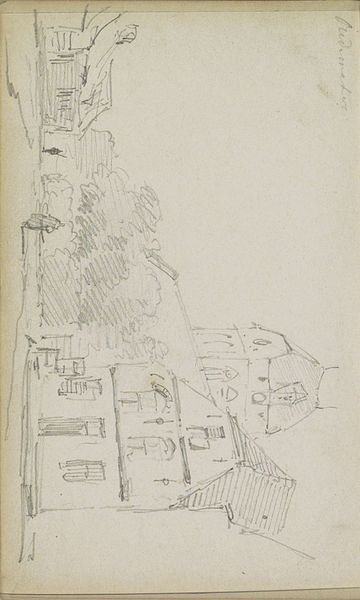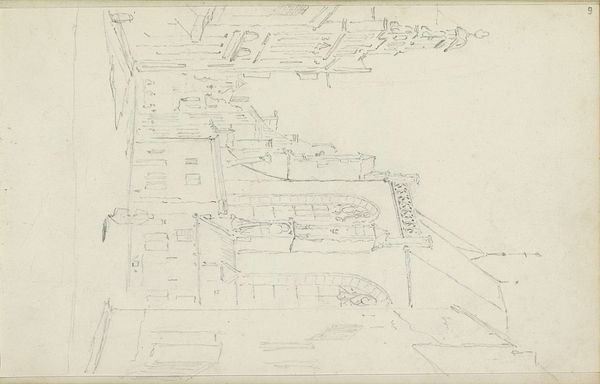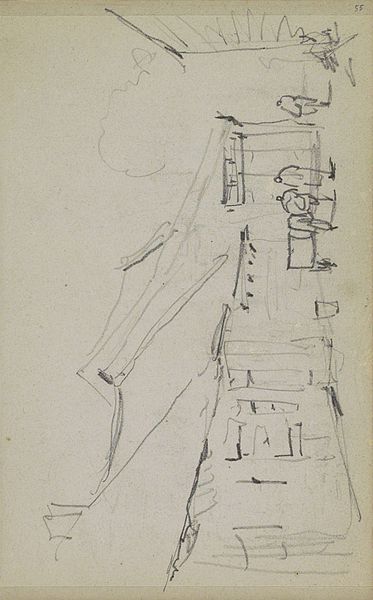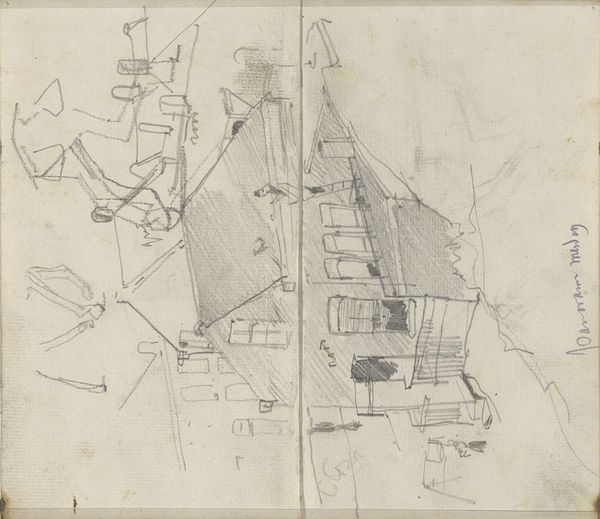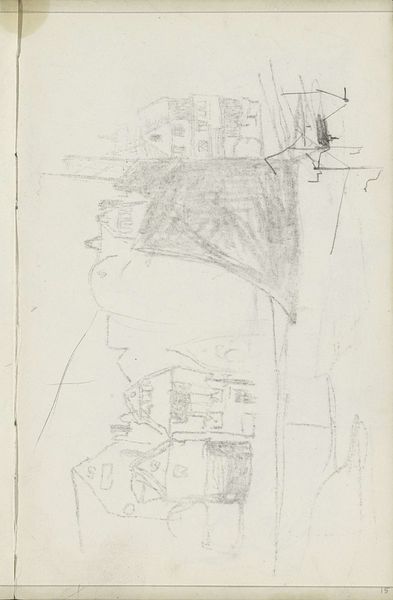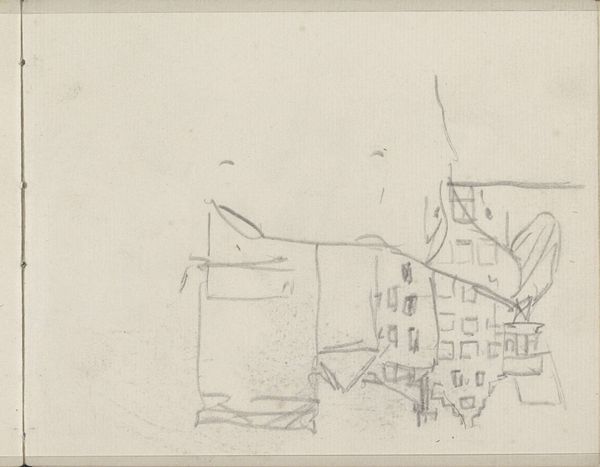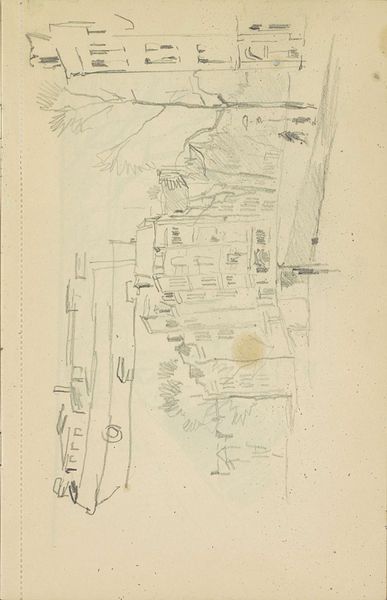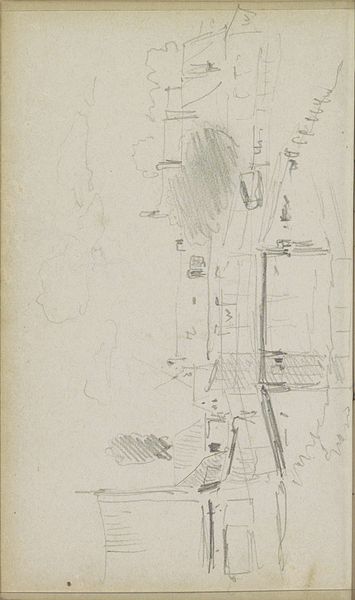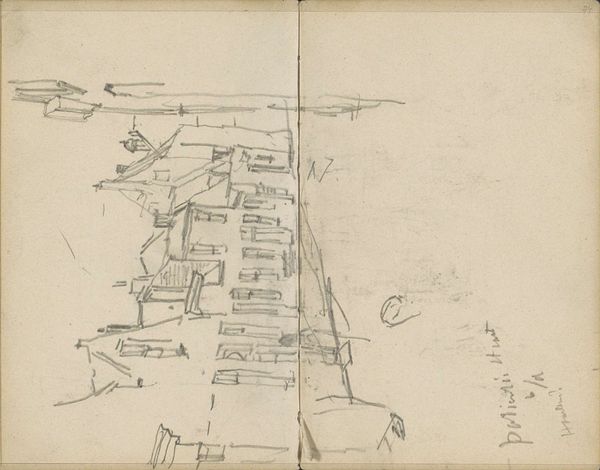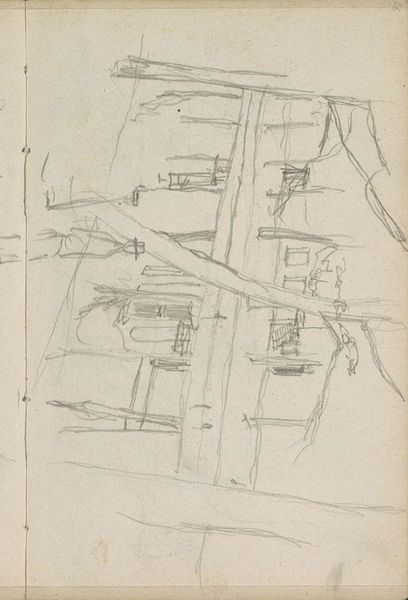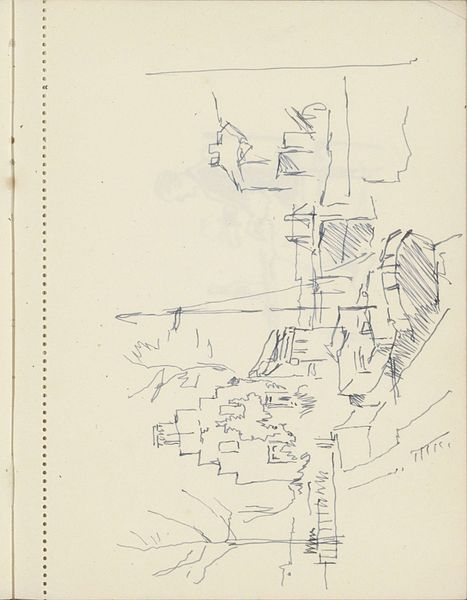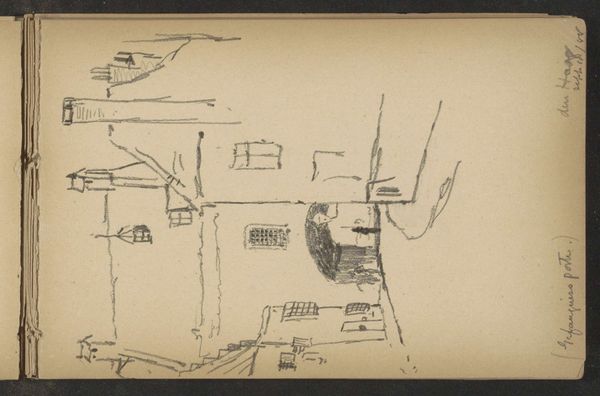
drawing, pencil
#
architectural sketch
#
drawing
#
aged paper
#
quirky sketch
#
sketch book
#
personal sketchbook
#
idea generation sketch
#
sketchwork
#
pencil
#
sketchbook drawing
#
cityscape
#
storyboard and sketchbook work
#
sketchbook art
#
realism
Copyright: Rijks Museum: Open Domain
Curator: This pencil drawing is called “Gezicht op een stad, mogelijk Metz,” which translates to “View of a city, possibly Metz,” created around 1840-1841 by Johannes Tavenraat. It's held here at the Rijksmuseum. Editor: It has such an ephemeral quality. The lightness of the pencil, the aged paper… it feels like capturing a fleeting moment, a memory barely held onto. The perspective is almost dreamlike. Curator: It does evoke a sense of transience. Tavenraat was working during a period of significant urban transformation across Europe, driven by industrialization. Drawings like this offer insight into the rapidly changing urban landscape. Editor: The suggestion of Metz, in particular, interests me. Metz, with its complex history of Franco-German control, embodying centuries of shifting power dynamics. I wonder, was Tavenraat drawn to a city constantly negotiating its identity? The sketch is upside-down, maybe pointing to instability. Curator: That’s an intriguing interpretation. Sketchbooks offer such a fascinating glimpse into an artist's working process and interests. Consider the architectural style—a blend of medieval and early industrial elements, perhaps revealing the emerging bourgeois class asserting their presence in traditionally aristocratic spaces. Editor: I see what you mean about the architectural shift, though it reads more chaotic than celebratory for me. But if Tavenraat made the sketch on location, did he have a relationship to the place or its inhabitants? Maybe his sketchbook also represents his journey as a person of his time, including colonialism, nationalism, and capitalism. Curator: Indeed, contextualizing the artist within these broader sociopolitical trends opens avenues to interpretation. While the sketch itself might not overtly display these issues, its very creation within that era places it within that framework. Editor: The lack of detail almost allows it to be anywhere. By obscuring details, Tavenraat also lets us focus on urban life. We should consider how social structures influence architectural trends. Curator: This conversation really underscores the power of art, even a simple sketch like this, to illuminate complex historical and societal issues. Editor: Absolutely. It also compels us to keep digging, to keep asking what the art makes possible for those of us now in conversation with it.
Comments
No comments
Be the first to comment and join the conversation on the ultimate creative platform.
